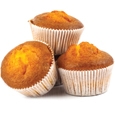
Until a couple of years ago, I always peeled a banana the same way – grab the stem, pull down, and peel the rest of it. It did not matter that the break is a little messy and the top of the banana is a little mutilated. Also, the peel then had an unbalanced feel to it. Someone then pointed out to me that monkeys do not eat a banana that way. (And if there is anyone who knows how to eat a banana, it’s a monkey.) Monkeys hold the banana by the stem, which as it turns out is a handy handle, and when peeled from the top, the banana unfolds into three symmetrical sides. This is the perfect eating experience if you like bananas.
After the initial embarrassment of being outsmarted by a monkey, I swallowed my pride (and banana) and decided to spread the good news. I have told students at school about this more effective peeling technique, and they often come back to school delighted after trying it. For many it may be the only thing they ever remember that I taught them, but I am not sure if it is an honor to be remembered every time someone peels a banana.
When it comes to muffins, I learned a secret a little earlier. During my formative years, my family always cut muffins vertically down the middle, added butter, and then put the muffin back together only to have the two parts split and fall down, because butter is not generally used as an adhesive. While dating a girl in college, I noticed how her family sliced their muffins horizontally, keeping the muffin together for a better distribution and melting of butter. Impressed, I married her two years later.
Now why do I bring up these two culinary examples at the risk of postponing the writing of this column to get a snack? Because I believe that they perfectly illustrate how often there are simple solutions to seemingly complex problems. Particularly in times of stress, when clear thinking is needed the most, we often panic, frantically mulling a million wild solutions when a simple one might be right before us. It’s at time like this we need to remember the acrostic K.I.S.S – Keep It Simple, Stupid. During my first year of teaching high school marching band, one of my three bass drummers was sick the day of marching contest. Frustrated, depressed, and at wit’s end on how to get the percussion feature covered, I called my dad, a retired Air Force pilot known for his coolness under pressure. He called back a couple of hours after our initial conversation and suggested that my drum major play it. The part wasn’t too difficult, and since it was all pit percussion with no marching required, that’s what we did. Simple.
The second thing I learned from bananas and muffins is how often we are locked into doing things a certain way just because that’s the way it has always been done, in spite of the fact that there are better ways right under our noses. When it comes to teaching, we often teach the way we were taught, not giving thought to other alternatives. Conscious or not, it’s an “it was good enough for my band director so it’s good enough for me” mentality. And while an old way might be plenty effective, is it 100 percent effective? Could it be improved? For example, until this year I have always extended the third valve slide whenever I played a low D on trumpet and tried, with much frustration, to teach this to beginning trumpet players. I say frustrating because low D is one of the first notes taught in beginning band books and teaching this along with all the other things the kids have to learn seems to be too much. Also, the time it takes to work the slides in is impractical on newly-rented instruments and ones kids manage to wrangle from a relative or local flea market. Furthermore, the typical beginner’s hand is too small to effectively push against the ring while playing without jarring the mouthpiece.
These difficulties led me to introduce this concept later and later to the point that it became much harder to get trumpet players to remember to use it in their playing. And yet a simple solution was there along, and it took discovering an archived article by an author friend of mine, David Newell, to help me see it. Without going into great detail, the article introduced the idea of starting with the third valve slide extended to begin with and pulling the slide back in when E flats, which are introduced much later, occur. The E flats become the “bad notes,” and the slide must be pulled in for them. (The third valve slide is pulled back in before returning the instrument to its case each day so that it does not get stuck in the extended position.)
Teachers should never be resigned to the fact that many kids are just not going to grasp certain musical concepts. We should always consider that there might be a better way to teach an idea and keep pushing until we find a method that enlightens every last kid. When is the last time you looked at a new approach to counting, tuning, tone, balance, technique development, or seating arrangements? This may seem like it is rocking the boat and complicating matters, but the better way might actually be simpler.
Food for thought, I guess. While you’re thinking about that, I’m going to go eat a banana nut muffin.






